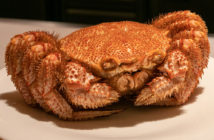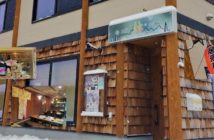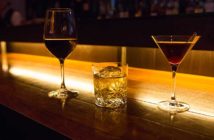The ancient art of Soba noodles began in ancient China and was brought to Japan during the Jomon period (10,000 – 300 BC). Soba noodles are high in vitamins and minerals, and are said to bring about longevity and stability to one’s life. Local Soba guru and owner of “Uga Soba”, Uga Jin, demonstrates the traditional art of making soba noodles from scratch.
Uga Jin first came to Niseko 15 years ago to ski moguls, attracted by the high quality of the mogul skiers from the area. He wanted to improve his mogul technique, but upon his arrival, he found he could have more fun off-piste, converted by the legendary powder of Niseko. When asked why he has kept returning to Niseko, he simply answers; “For the powder and good friends”.
Uga Jin trained as a Soba noodle chef for 10 years, finally opening his own Soba noodle restaurant “Uga Soba” in Niseko, just 3 years ago. “Niseko just seemed like the right place to open my restaurant”, Jin-san explains. “The first reason I chose to train in Soba is that it’s delicious. The second reason is that it’s actually a good skill to teach to others. The third is that there are a lot of Soba chefs, but there aren’t that many teachers. I want to teach people the art of Soba noodles.”

The dough for the noodles starts with a mix of flour consisting of 80% soba flour (commonly known as buckwheat,) and 20% regular flour; both of which are locally produced; and take on a light green hue when combined. Natural springwater from the Makkari area is slowly added to the flour, and mixed in by hand. Jin-san mixes the dough carefully and thoroughly, making sure that there are no excess dough particles left in the bowl.
The dough is then kneaded for about 10 minutes and then rolled into a ball to ensure that there is an even consistency. The dough is then flattened by hand into a pancake shape, and rolled out with wooden rods that act as rolling pins for the dough. Jin-san then carefully rolls the dough out into a large square shape: For his own soba training, it took 3 years to perfect the technique of kneading and rolling the dough.
Once the dough is an even thickness and consistency, it is then folded over many times to form separate layers. The folded dough is then placed on a large wooden chopping board called a “Mannita”, and a smaller piece of wood is placed on top of the dough. Jin-san uses a large knife called a “Soba Kiri Hocho” to carefully cut the dough into thin strips, or ‘noodles’.

It is truly amazing how uniform each noodle is in thickness and size. Jin-san tells me that when the noodles are too uniform in size, customers often question whether they have actually been made by hand or machine.
The noodles are then washed in cold water and served on a bamboo sieve with a bowl of soba noodle sauce and wasabi. The noodles are dipped into the sauce with wasabi before being eaten. When asked if the noodles have to ‘rest’, Jin-san explains that the fresher the noodles are, the better.
Well, they don’t get much fresher than this—I say a sincere “Itadakimasu”, and enjoy the best Soba Noodles that I have ever had!




